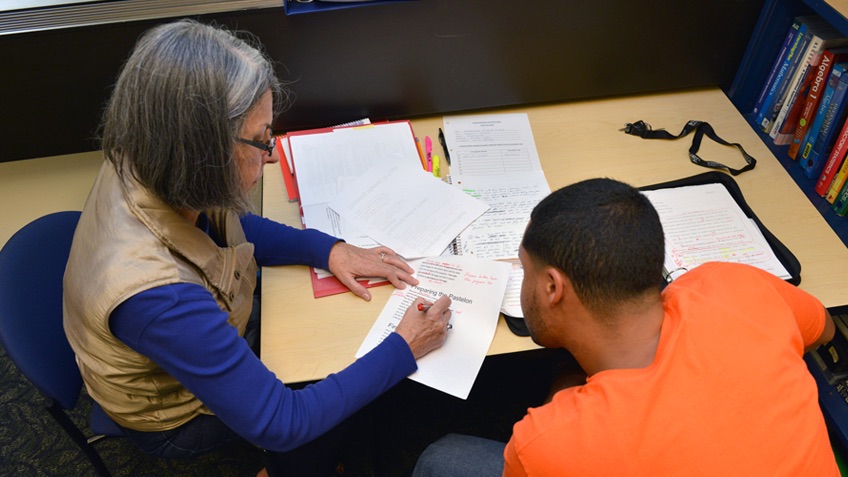When I first started working with students who were struggling academically, I honestly felt overwhelmed. I knew that traditional teaching methods didn’t always work for everyone, but I wasn’t sure what I could do to change that. After a lot of trial and error, some sleepless nights, and plenty of frustration, I finally started to understand how to create academic support programs that actually made a difference.
I’ll be the first to admit, I made some mistakes along the way. I tried programs that looked good on paper but didn’t work out. And, at times, I felt like I was spinning my wheels. But through each challenge, I learned valuable lessons that helped me fine-tune the support I offered students. If you’re in a similar position, struggling to figure out how to support students who just can’t seem to get it together academically, keep reading. I’ve been there, and I’ve got some tips that might help.
Understanding the Root Causes of Struggling Students

Identifying the Core Issues
The first thing I had to do was understand why my students were struggling. It wasn’t just about bad grades or poor attendance; it was much deeper. Some students had gaps in foundational knowledge, others were dealing with personal issues that affected their focus, and a few were just bored and disengaged.
I’ll be honest, I initially thought that if I just “taught harder” or “gave more homework,” it would fix things. Spoiler alert: it didn’t. I had to take a step back and figure out what was really going on beneath the surface. Once I realized that every student had a unique set of challenges, I started to tailor my approach to meet their specific needs.
One thing that helped a lot was conducting individual assessments with each student. You’d be amazed at how much you can learn just by sitting down with a student one-on-one. This helped me identify the core issues and allowed me to design academic support programs that actually addressed their needs.
Creating Flexible Learning Pathways
Tailoring Learning to Individual Needs
One of the first things I did when designing my support program was offer flexible learning pathways. Not every student learns the same way, and if you’re trying to force every student into the same mold, you’re going to end up with a lot of frustration (for both you and the students).
For example, some of my students thrived with one-on-one tutoring sessions, while others needed more visual aids or interactive tools to keep them engaged. By offering different types of learning formats—like small group sessions, online resources, and peer tutoring—I was able to create a more personalized experience.
Providing Emotional Support Alongside Academic Help
Building Trust and Encouragement
One thing I didn’t realize early on was how much emotional support struggling students need. Many of the students I worked with were not only dealing with academic challenges but also emotional or social issues. These issues affected their ability to focus on schoolwork and made them disengage from the learning process.
I had to learn that creating a safe, supportive space was just as important as offering academic help. Simple things like checking in on students, offering encouragement, and even just listening to their concerns made a huge difference in building trust. Once they felt comfortable, they were more willing to open up about the challenges they were facing academically.
This part of the program was so critical that I even added a weekly check-in session with students, where we could talk about anything—academic or personal. It wasn’t always easy, but it built a strong relationship that helped me better support their learning.
Encouraging Self-Advocacy and Accountability
Helping Students Take Charge of Their Own Learning
One of the biggest challenges I faced was helping students become self-advocates. In the beginning, many of my students were so used to just waiting for me to tell them what to do that they didn’t take much initiative in their own learning. This made it difficult for them to make lasting progress.
To address this, I started to incorporate goal-setting exercises into the program. Students would set their own academic goals (with my help, of course) and regularly track their progress. I also encouraged them to speak up if they didn’t understand something or needed extra help. This small change made a big difference in their engagement and motivation. They didn’t just rely on me anymore—they took ownership of their learning.
Utilizing Peer Support and Collaboration
Strengthening Connections Through Peer Tutoring
Sometimes, the best support comes from other students. I started incorporating peer tutoring into my program, which gave both the struggling students and the tutors an opportunity to learn from each other. It also helped students build confidence and improved their social skills.
One of the most rewarding parts of this was seeing students who were once behind start helping others who were struggling with the same concepts. It created a sense of community and made the students feel like they were part of something bigger than just their individual challenges.
I learned that fostering collaboration among students not only helped with academics but also boosted their confidence and sense of belonging in the classroom.
Tracking Progress and Adjusting the Program
Staying Flexible and Responsive to Student Needs
Designing an academic support program is not a one-size-fits-all deal. What works for one student might not work for another, and what works this month might not work next month. That’s why it’s so important to track progress regularly and adjust your approach as needed.
For example, after a few weeks, I would review students’ grades, test scores, and attendance, and adjust the support program accordingly. I also asked students for feedback on what was working and what wasn’t. Sometimes they’d say things like, “I need more time to work on my projects” or “The math tutor is really helpful.” This feedback was crucial in making sure the program was meeting their needs.
I also used different tools and platforms to track progress. Google Sheets or Excel can help you keep track of each student’s improvement, attendance, and any notes you’ve made on their progress. It made things more organized and ensured that no student slipped through the cracks.
Conclusion: The Journey Isn’t Perfect, But It’s Worth It
Looking back, I realize that designing a support program for struggling students is a process, not an event. It’s something that evolves over time as you learn what works, what doesn’t, and what each student really needs. There will always be challenges, but the rewards—seeing a student’s confidence grow, watching them finally understand a concept, or hearing them express how much they’ve improved—are totally worth it.
If you’re looking to design your own academic support program, remember that flexibility, emotional support, and student-centered goals are key. And don’t forget to keep track of your progress—both the students’ and your own. You’ll make mistakes along the way (I certainly did), but that’s all part of the learning process. Stick with it, and you’ll see real changes in your students.
Ace Your Assignments: Effective Homework Strategies for Success
Homework doesn’t have to be a chore if you have the right strategies in place. Homework Strategies offers practical tips to help students tackle assignments efficiently and with less stress. From creating a productive study environment to time management techniques, this article provides actionable advice for staying organized and focused. Whether you’re a student looking to improve your grades or a parent helping your child, these strategies will ensure homework becomes a more manageable and rewarding task.

